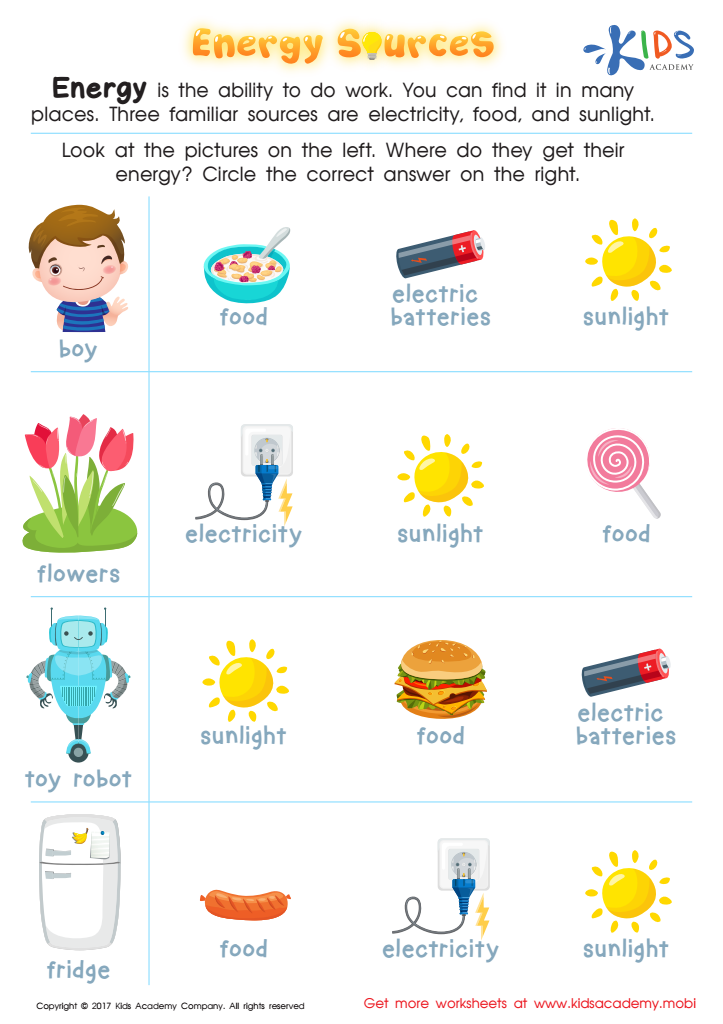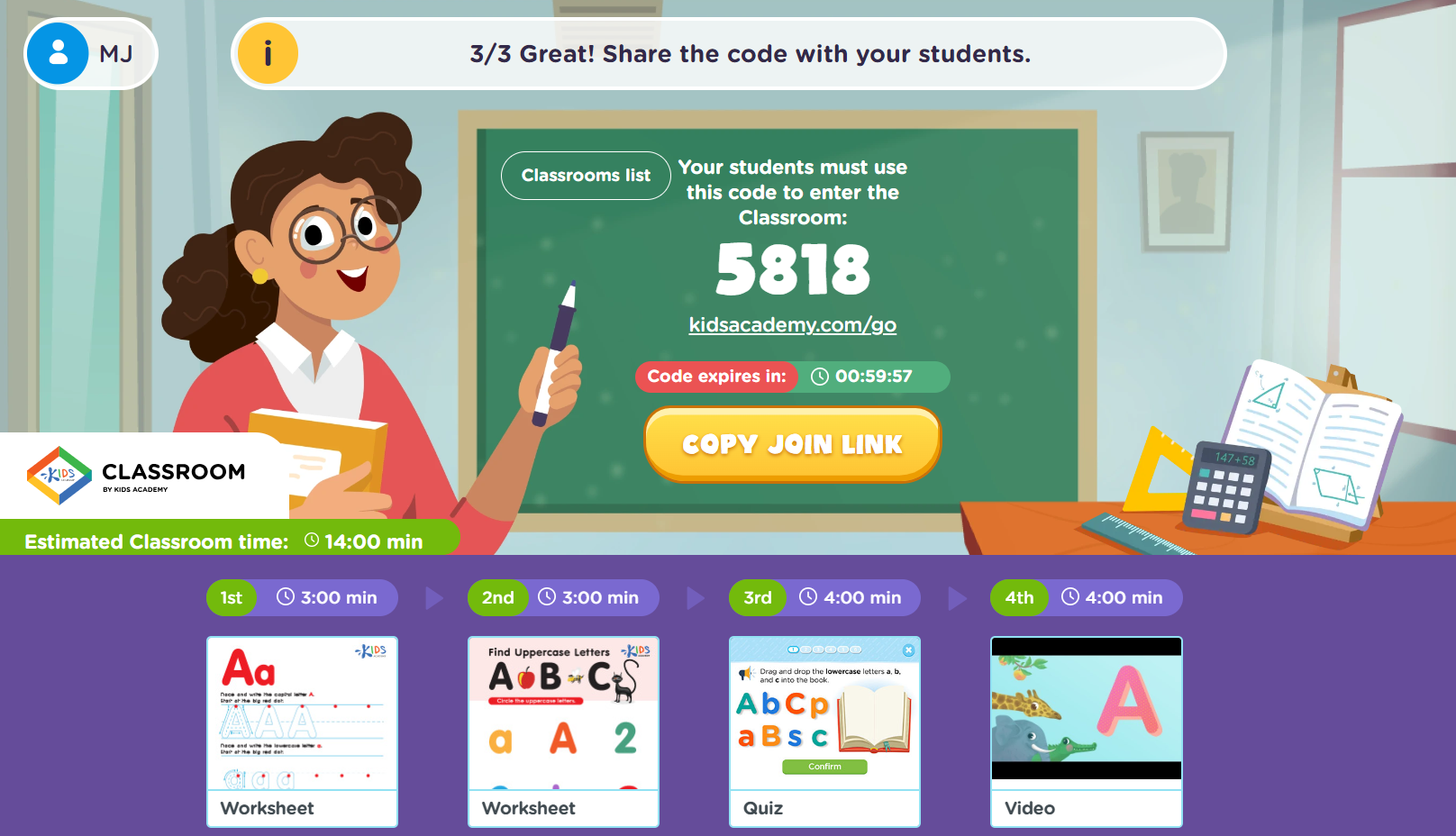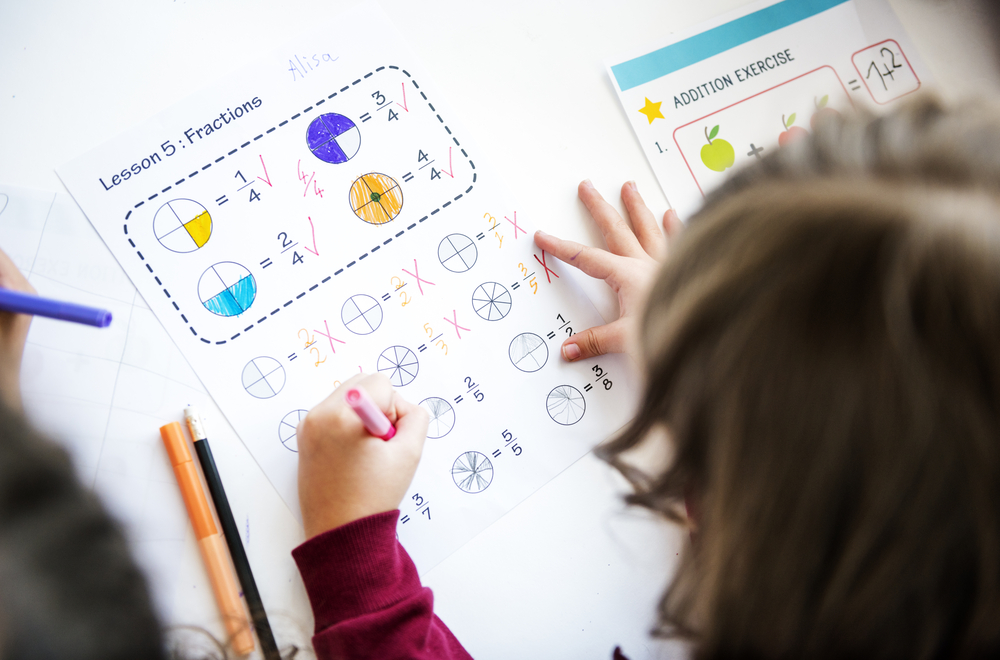Differentiating renewable/non-renewable Worksheets for Kids
1 filtered results
-
From - To


Energy Sources Printable
Question/Answer
How to test a Grade 1 student’s Differentiating renewable/non-renewable skills?
To test a Grade 1 student's ability to differentiate between renewable and non-renewable resources, use visuals and simple examples. Show pictures of both types of resources (such as solar energy for renewable, and coal for non-renewable), and ask the student to sort them into two groups.
Why is the Differentiating renewable/non-renewable skill important for Grade 1 students?
Teaching Grade 1 students to differentiate between renewable and non-renewable resources is crucial as it lays the foundation for understanding sustainability and environmental stewardship. It instills an early awareness of how our choices impact the planet, emphasizing the importance of preserving natural resources for future generations and fostering responsible behaviors from a young age.
How to train the Differentiating renewable/non-renewable skill in Grade 1 students learning about Physical Science?
To train Grade 1 students in differentiating between renewable and non-renewable resources, use simple, interactive activities like sorting games where they categorize images or objects into renewable (e.g., sun, wind, water) and non-renewable (e.g., coal, oil) groups. Incorporating storytelling with examples and visual aids like posters will also help reinforce the concepts in an engaging and age-appropriate manner.
 Assign to the classroom
Assign to the classroom












